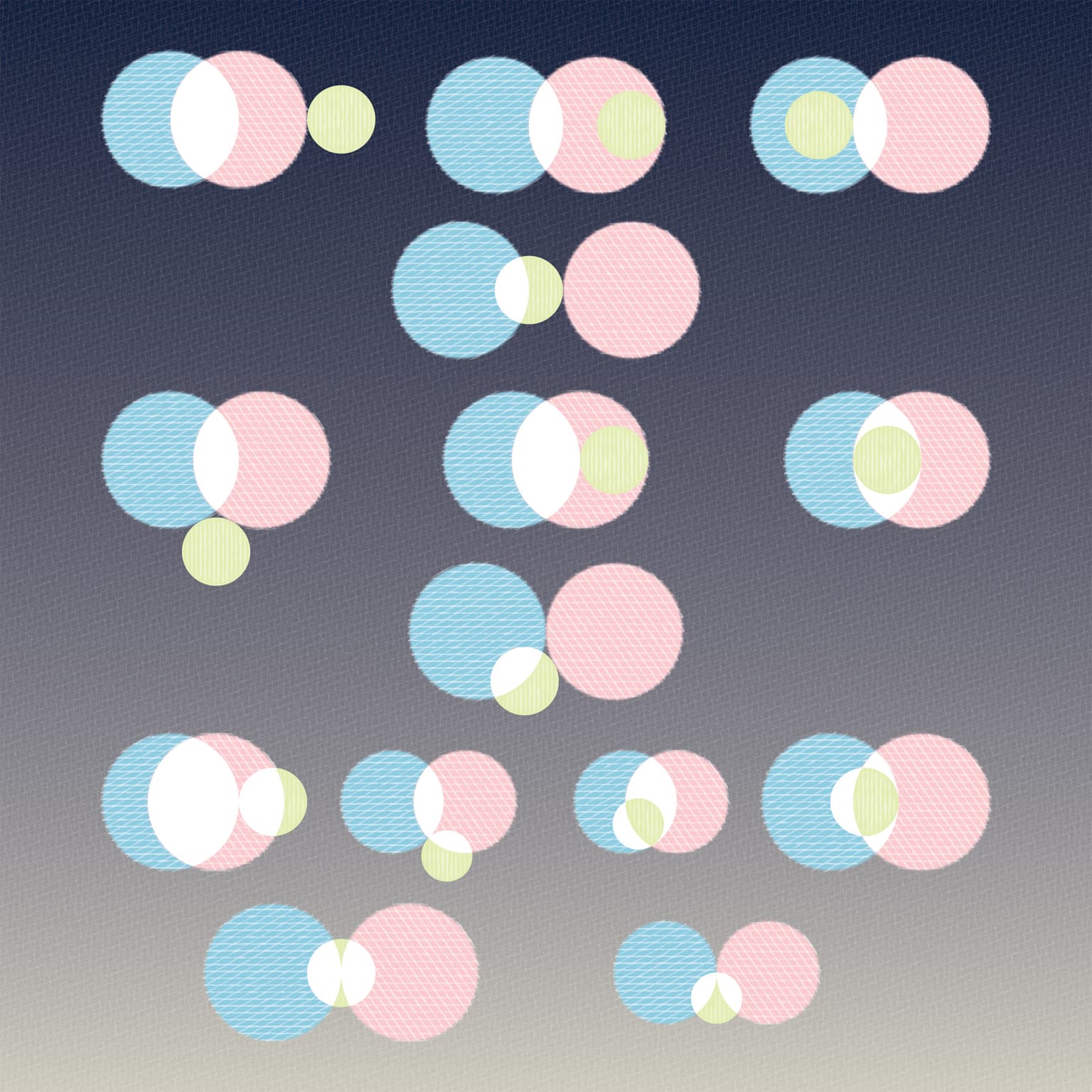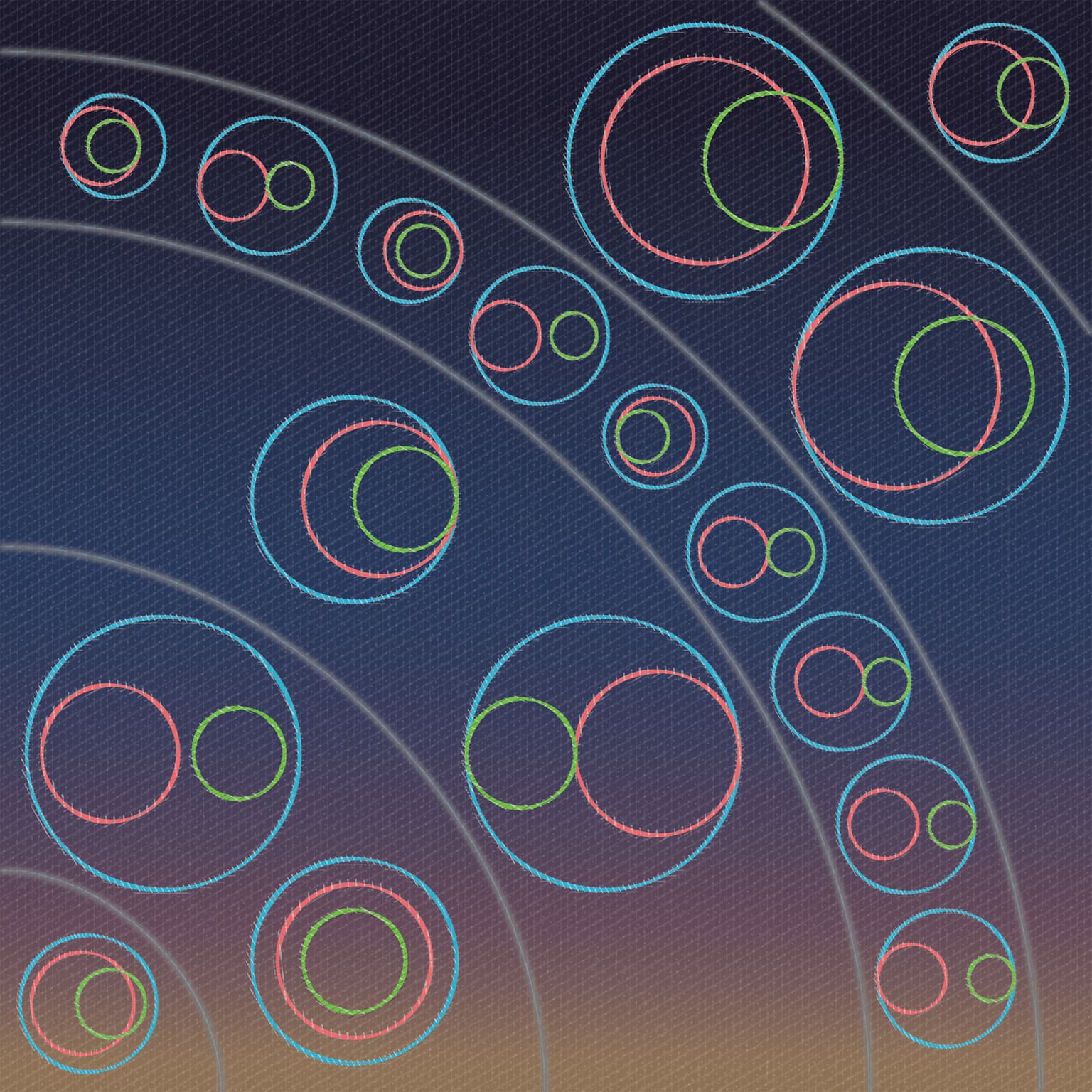2022 Joint Mathematics Meetings
James Mai
Artists
James Mai
Professor of Art
School of Art, Illinois State University
Normal, Illinois, USA
Statement
Current artworks are composed with “conjunction-forms,” shapes comprised of three circles in distinct combinations of proximity (nearby, but not touching), tangency (edge-to-edge contact), and/or intersection (overlapping of interiors). By varying the diameters of the circles, four discrete types of conjunction-forms produce four different form-sets. Taken together, the four form-sets include 200 distinct conjunction-forms. Artworks are composed of various subsets selected from within a single form-set or across multiple form-sets.
Artworks

Transits
20 x 20 cm
digital inkjet print
2020
Each of these conjunction-forms has one smaller circle and two larger, equal-diameter circles. Forms in each horizontal row have the same combinations of proximity, tangency, and/or intersection. Multiple forms in a row differ by whether the smaller, tangent circle is located inside or outside the larger circle(s). The three smaller conjunction-forms in the lowest two rows show “coincident-point” forms, in which multiple contacts occur at a common point. For example, the right-hand form in the bottom row shows tangency of the two larger circles and intersection with the smaller circle occurring at the same point.

Horizon Set
20 x 20 cm
digital inkjet print
2020
In this artwork, each conjunction-form has one large-, one medium-, and one small-diameter circle. The 17 forms comprise two complete subsets from the larger form-set : twelve “double-enclosure” forms (the small and medium circles are enclosed by the large circle) and five “nested” forms (the small circle is enclosed by the medium circle, which is enclosed by the large circle). Five of the six arcs hold one distinct combination of proximity, tangency, and/or intersection, and one of the six arcs (the narrowest arc, fourth from the lower left) holds two combinations : two tangencies + one proximity, and one tangency + two proximities. The multiple forms in each arc are distinct configurations of the combination.